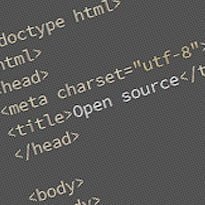Trusts looking for electronic patient record systems should consider open source alternatives, as they offer “the biggest bang for buck”, an NHS England representative has said.
Speaking at EHI’s CCIO open source conference, held as part of the Digital Health Festival, NHS England’s head of business systems Richard Jefferson, said the organisation’s immediate focus is on encouraging a move to open source EPRs due to the greater value for money they offer trusts.
“We are prioritising the EPR space because that’s where we see [open source] as having the biggest bang for buck, but there is a wide spectrum of possibilities.”
The higher software licence cost for EPRs is one of the main reasons why trusts should consider a move to open source, he said.
“If you don’t mind the fact that you’re paying £50 a year for some commodity software, that’s fine. But why put off using it in a clinical setting where you can save hundreds of thousands a year?”
He said the chance for greater clinical engagement and flexibility to make software changes are also important benefits, and should be considered as valuable as potential financial savings.
“If you think that the driver of open source is purely about saving money, that’s not the right approach to take.”
Jefferson said the focus on open source in the second round of the technology fund will allow NHS England to help providers access the market and speak to trusts, while also developing clinical engagement groups and ‘communities of interest’ to share innovation and examples of best practice.
He said 10 to 15 trusts have expressed an interest in using Moorfields Eye Hospital NHS Foundation Trust’s open source EPR Open Eyes, while another four are looking at using another large open source EPR provider.
NHS England is also talking with IMS Maxims and another EPR provider about releasing the code for their products, he said.
In response to audience questions, Jefferson said NHS England’s support for open source is not aimed at unsettling the software market.
“We didn’t set out with the objective of disrupting the market: that comes from offering something competitive that has value.”
He would not be drawn on NHS England’s goals for open source software use, such as any percentage targets for the amount of trusts using open source.
“You have to understand what the demand is and what the supply is, and we’re still in the first year of understanding what the demand looks like.”
Learn more about what happened at the CCIO open source conference in our Insight section

